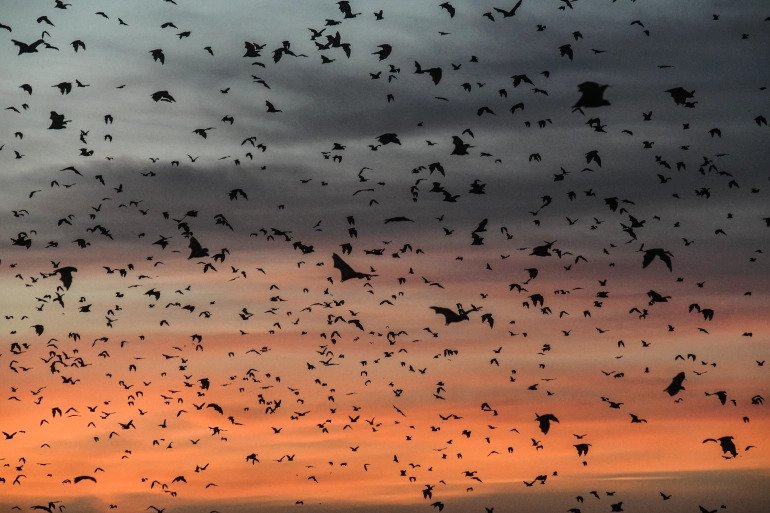By Ariani Mohd Nor
(The original article from Al Jazeera can be accessed here.)
The news feature by Georgina Smith reported in Al Jazeera recently tells a story about fruit bats and its way to extinction as national parks and pristine areas are on the brink of disappearing.
The author narrates the story in the form of blocks that explains the issue that is being discussed. The overall flow of the article is a good read, and elements used in the article would definitely attract readers into reading until the end.
The feature article tells a story of how the migration of fruit bats, which was implied in the title as ˜worlds biggest mammal migration is in danger due to rapid deforestation and the threat of abolishment of national parks in Zambia.
The author seemed to be using two techniques in their article, which are narration and on-site interview to tell their story. By the end of the article, it gets readers to think about the importance of preserving natural resources in order to save these fruit bats from its brink towards extinction.
The piece, written by Smith, comprises three blocks – the introduction, and the following two regarding the causes of the endangerment of fruit bats.
Smith leads the story with a compelling narration of what is assumed to be the setting of the piece, which is Kasanka National Park, Zambia – œAs the red sun sets over a remote part of Zambias Central Province, the sky suddenly fills with the sound of fluttering wings and then turns black.. which creates a brief suspense of what actually ˜turns black that was mentioned in the sentence.
Then, the lead flows to the first paragraph that gives them the answer (œAn estimated 10 million straw-coloured fruit bats fill the evening air). The sequence of sentences between the lead and its first sentence encourages readers to move on to the second paragraph as readers now know what story they are in for.
Further into the introduction of the story, the overall introduction pulls readers with its thorough description about fruit bats and their usual habitat – in this setting, the thick swamp along the Musola River, part of Kasanka National Park.
The introductory block states all the background information that readers need to know about the subject, which are the fruit bats, and the author pieces together their words to gain readers sympathy about the significance of said fruit bats.
As the introductory block explains the what, the following blocks after the introduction seem to be talking about the whys. As aforementioned, Smith uses narrative techniques such as interviews to collect information, which is very evident in the second and third blocks of the article.
Interestingly, while the introduction does not have any specific pattern in how the news was arranged, the second and third paragraphs seem to use the inverted pyramid to convey their messages. For example, the second block (œProtecting the park) starts with the name of the interviewee attached with the subtopic discussed.
Smith interviews James Mwanza, community outreach manager at Kasanka Trust, who plays a key role in conveying information in this block. The third block (œAlarming deforestation) starts with a set of statistics regarding deforestation in Zambia and why it keeps happening.
The article, however, ends too abruptly with no closing or conclusions.
It ends with a criticism towards the Zambian government for the lack of funding regarding protection of natural resources. Ending with a quote by Davian Gumbo, one of Smiths respondents – œWhen it comes to the dollar or kwacha to support those activities on the found, thats where there has been reluctance – it gives the kind of impact that leads readers to believe that there is nothing that can be done about the threat of the worlds biggest mammal migrations, and leaves readers hopeful that something can be done about it regardless.
All in all, the article is a simple read that aims to inform the readers about an endangered species and bring awareness about current issues, mainly the disruption of an ecosystem due to human greed and deforestation.***
(This article is written as part of individual assignment series for Feature Writing class)
